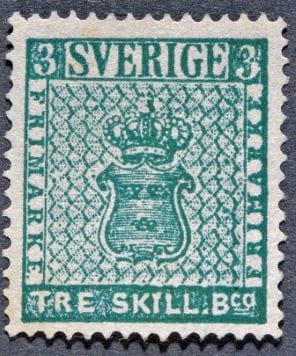Stamps
Englishman Rowland Hill is usually credited with inventing flat-rate postage, which was introduced in 1840 and paved the way for the use of stamps.
Previously, the cost of transporting a letter was determined by transport distance and/or letter weight. It was now decided that the same postage would apply to all domestic transports, thereby allowing the sale of stamps as proof that letters had been paid for.
Flat-rate postage introduced 1851
Flat-rate postage and stamps were introduced in Denmark in 1851. The postage rate for a letter weighing less than a certain amount was 6 Riksbanksskilling (Rbs), but only 4 Rbs if stamped. Information about the new system was published in one of Copenhagen’s newspapers and instructions on how to use stamps were printed up and available for purchase at large post offices. Stamps were to be affixed in the upper right corner of the address field – if placed elsewhere, letters were deemed unpaid and additional payment was required.
In Sweden “average postal rate” in 1855
The Swedish postal board discussed the idea for a few years, but after persistent motions from different quarters the Parliament introduced an “average postal rate” of 4 skilling in 1855. The sale of stamps began during the same year – drawn, engraved and printed by Count Pehr Ambjörn Sparre. The stamps were of the most modern type, perforated so that cutting them apart was unnecessary, and available in five colours.
After a somewhat slow start, stamps quickly gained popularity. No one can pinpoint the exact date when people began to collect stamps – but what started as an amusing past time for women and children quickly developed into philately, involving large sums of money and millions of collectors.







